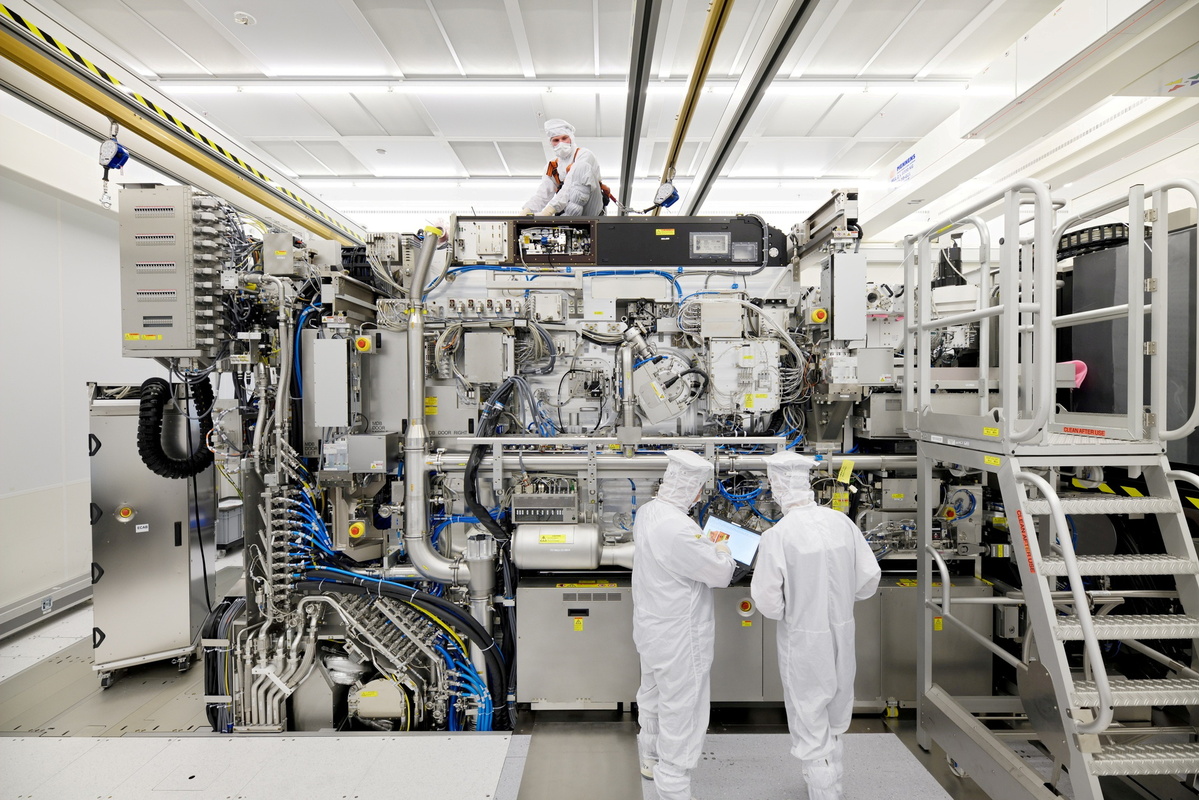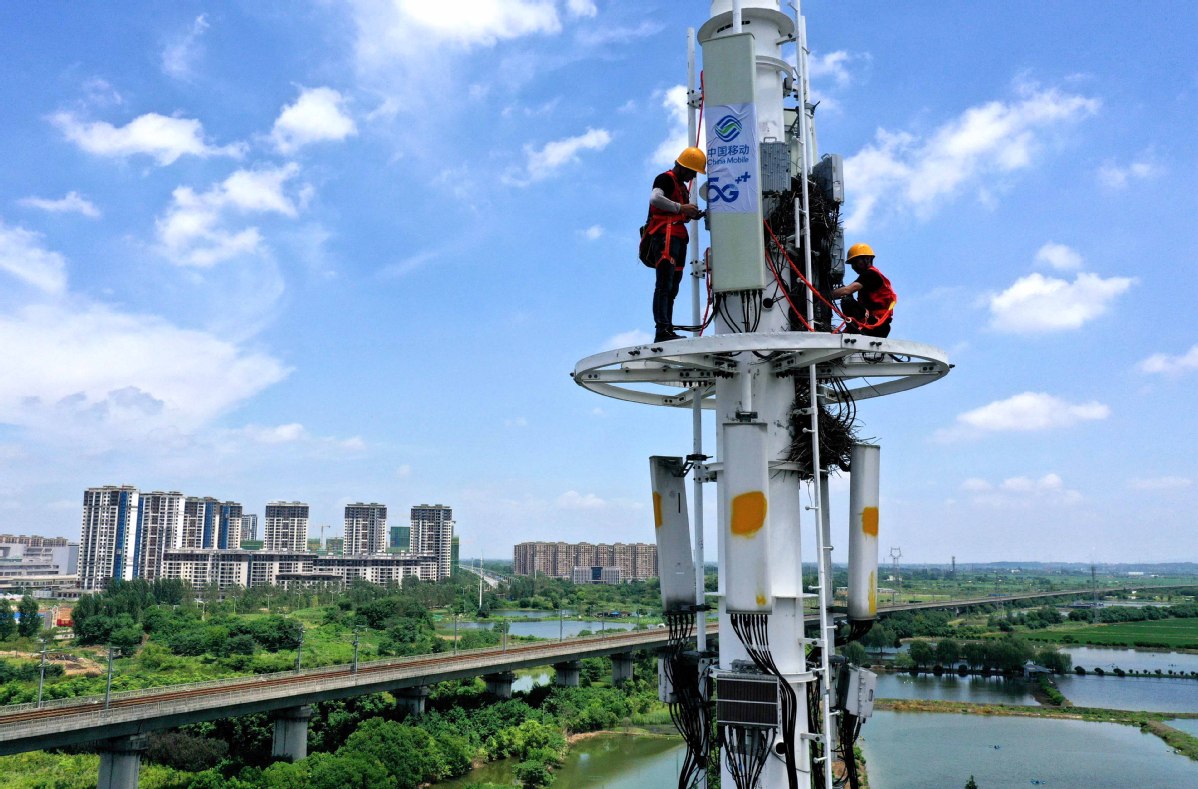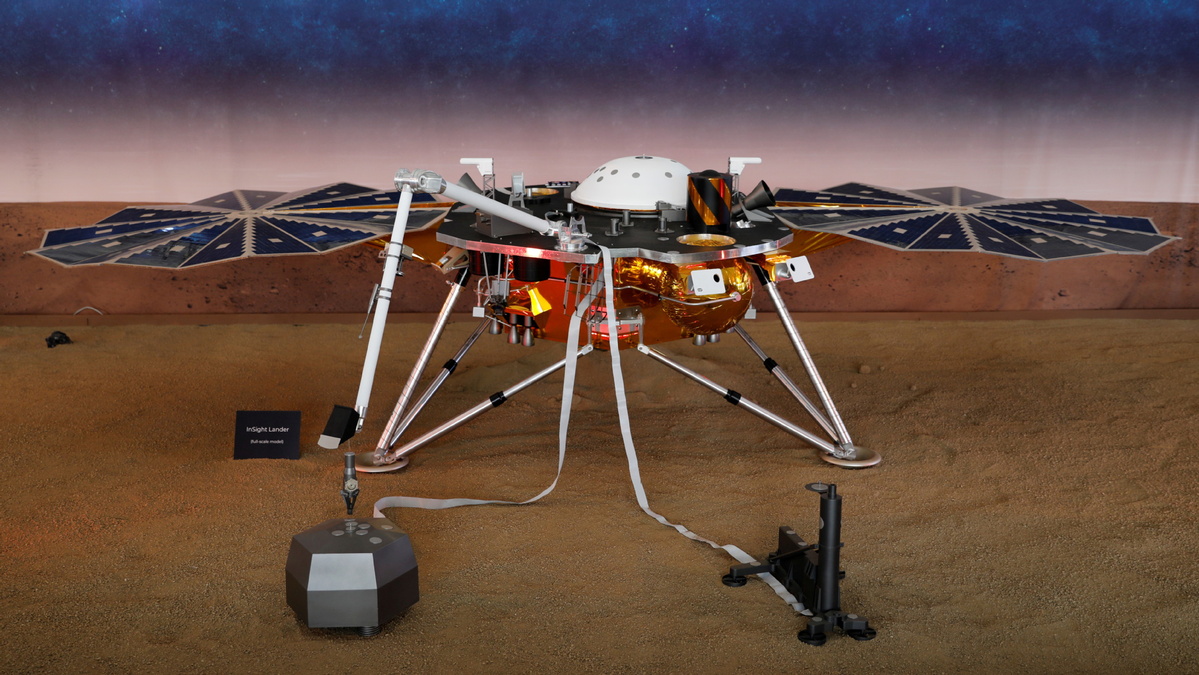
中文


Home

CAE in Media

Detail
Nation's major achievements listed in global top 10
- Published: Dec 15, 2021
- Source: China Daily
- Font size: BigMediumSmall

China's Five-hundred-meter Aperture Spherical Telescope (FAST) in Guizhou province, seen in this aerial photo in March 2019, began officially operating at the start of last year. FAST was listed among this year's Global Top Ten Engineering Achievements. It began operation in 2020 as the world's largest and most sensitive single dish radio telescope. It is located in a karst depression in Southwest China's Guizhou province. It will enable the expanded exploration of the universe. [Photo by Yang Xiaobo/For China Daily]
China has four major feats listed among this year's Global Top Ten Engineering Achievements, according to the journal Engineering, one of China's most prestigious scientific publications.
Experts said China will continue to be an active contributor to global engineering frontiers and make more breakthroughs in solving major engineering obstacles that are key for the sustainability and wellbeing of mankind.
The four projects spearheaded by Chinese engineers are the Five-hundred-meter Aperture Spherical Telescope, hybrid rice, the Three Gorges Hydroelectric Power Station and the ultra-high voltage transmission project.
The telescope, located in southwestern China, became operational last year and is currently the world's largest and most sensitive single dish radio telescope. The entire Three Gorges project was completed last year after more than two decades of construction. It is the world's largest multipurpose hydraulic complex.

The Three Gorges Dam in Yichang, Hubei province discharges floodwaters on July 2, 2020. The Three Gorges project was listed among this year's Global Top Ten Engineering Achievements. The Three Gorges Project was completed in 2020 after more than two decades of construction. It is the world's largest hydraulic complex. The Three Gorges Project is a multi-purpose project with major functions that include flood control, electricity generation, navigation, and water supply. It brings huge socioeconomic and ecological benefits through energy conservation and emission reductions. [Photo/Xinhua]
The third generation of hybrid rice created by Chinese scientists set a new annual yield record of 22.9 metric tons per hectare last year. In 2019, China launched the world's first 1,100-kilovolt ultra-high voltage direct current transmission network, making efficient, large-scale allocation of electricity across China possible.
The other achievements included AlphaGo and AlphaFold, which are artificial intelligence programs designed for specific tasks such as playing chess and predicting protein structure, and the development and use of the CRISPR/Cas9 gene-editing technique.
Extreme ultraviolet lithography systems for high-end chipmaking, 5G mobile communication technology, NASA's InSight Mars Lander, public health epidemic prevention and the battle against COVID-19 also made the list.
The achievements on the list are major engineering projects or breakthroughs with global influence that have been completed in the past five years, the journal said. They represent the highest level of engineering science and technology in their respective fields.

Assessment experts harvest third-generation hybrid rice grown in the experimental field in Hunan's Hengnan county on Nov 2, 2020. Hybrid rice was listed among this year's Global Top Ten Engineering Achievements. Heterotic rice hybrids with high yield, disease resistance, and good quality have been developed by using male sterile lines as a genetic tool. In 2020, the third generation of hybrid rice developed by Chinese scientists set a new record with an annual yield of 22.96 metric tons per hectare of double-cropped rice. The successful development and large-scale promotion of hybrid rice is a great breakthrough in crop science and technology and provides an important foundation for global food security. [Photo by Zhou Wei/for chinadaily.com.cn]
The journal Engineering is a publication of the Chinese Academy of Engineering. The list's creation involved nominations and recommendations by engineers and technicians around the globe, numerous public surveys and final screening by the selection committee.
On Tuesday, the academy's Center for Strategic Studies and global analytical firm Clarivate published their Engineering Fronts 2021 report. The document, published annually since 2017, selected a total of 186 research and development frontier topics for nine broad engineering categories, ranging from agriculture to engineering management.
Zhong Zhihua, vice-president of the CAE, said engineering and technology is a major support for socioeconomic growth and mankind's pursuit of sustainable development.
"As our country enters a new developmental phase, we urgently need to accelerate our pace of innovation in engineering and technology and improve the quality of our innovation," he said, adding this will require scientific insight on new emerging engineering frontiers to guide future development.

A view of the ultra-high voltage transmission line project in the Xinjiang Uygur autonomous region. The ultra-high voltage transmission project was listed among this year's Global Top Ten Engineering Achievements. Ultra-high voltage transmission is the most efficient and economical mode of long-distance transmission. The first 1000 kV ultra-high voltage alternating-current transmission project in China started operation in 2009. In 2019, the world's first ±1100 kV ultra-high-voltage direct-current transmission project began operating in China. China has the world's largest ultra-high voltage transmission network, which enables large-scale and cross-regional optimal allocation of energy. [Photo by Liu Wenlong/for chinadaily.com.cn]
Jeremy Lawson, senior vice-president of Clarivate, said all these fronts are essential to global social and economic development, and China is also at the forefront of many of these subjects.
Strategic collaboration with key global research organizations such as the CAE is central to advancing global scientific research and driving sustainable development, he added.
Yang Baofeng, an academician at the CAE, said the report tracks frontier engineering research that may yield new breakthroughs and innovations, and allow scientists, industries and policymakers to identify the latest engineering trends and adjust research and policy priorities accordingly.
Yang said this year's engineering frontiers had three main focuses: interdisciplinary research, the use of artificial intelligence in various engineering and industrial fields, and tackling major common issues such as the COVID-19 pandemic and climate change.

South Korea's Lee Sedol, then the world's top Go player, right, puts the first stone against Google's artificial intelligence program AlphaGo, as Google DeepMind's lead programmer Aja Huang, left, sits during the Google DeepMind Challenge Match in Seoul, South Korea, March 9, 2016. AlphaGo and AlphaFold was listed among this year's Global Top Ten Engineering Achievements. In 2016, the AlphaGo computer program defeated a 9-dan professional in the board game Go for the first time. In 2018, AlphaFold program produced highly accurate three-dimensional protein structures from protein sequences. Driven by massive data, advanced algorithms, immense computing power and domain specific knowledge, the AI technology is evolving into its next generation. [Photo/Xinhua]

Four authors of the paper on the HD pig model pose for a photo with some of the pigs in Guangzhou, South China's Guangdong province, March 30, 2018. They established a pig model of Huntington's disease (HD) using CRISPR/Cas9 gene-editing technology, bringing science an important step closer to curing neurodegenerative diseases. The CRISPR/Cas9 gene-editing technology was listed among this year's Global Top Ten Engineering Achievements. The two scientists who developed the CRISPR/Cas9 gene-editing technology received the Nobel Prize in Chemistry in 2020. Working like genetic scissors, this technology allows extremely precise and efficient genome editing. The CRISPR/Cas9 gene-editing technology has revolutionized molecular biology and holds profound potential for gene and tumor therapy, gene screening and detection and the breeding and genetic modification of animals and plants. [Photo/VCG]

Employees are seen working on the final assembly of ASML's TWINSCAN NXE:3400B semiconductor lithography tool with its panels removed, in Veldhoven, Netherlands, on April 4, 2019. Extreme ultraviolet lithography systems was listed among this year's Global Top Ten Engineering Achievements. Extreme ultraviolet lithography systems use high-energy ultraviolet light with a wavelength of 13.5 nm to reduce the dimensions of process nods during transistor manufacturing to 7.5 nm or even 3 nm. In 2019, the Dutch comply ASML announced its new-generation lithography system, which represents the most advanced fifth-generation lithography system. This system can extend the physical limits of Moore's Law to a new height. [Photo/Agencies]

Technicians check a 5G station in Tongling, Anhui province. Fifth-Generation (5G) Mobile Communication Technology was listed among this year's Global Top Ten Engineering Achievements. The first version of the 5G technical specifications was completed in 2018 and was then commercially deployed in 2019. Due to its advanced features, which include a high data rate, low delay, and massive connection density, 5G has the capability to support three typical applications, namely, enhanced mobile broadband, ultra-reliable low latency communication and massive machine-type communication. 5G will realize the interconnectivity of humans, machines, and things, greatly accelerating the digital transformation of human society. [Photo by Guo Shining/For China Daily]

A life-size model of the spaceship Insight, NASA's first robotic lander dedicated to studying the deep interior of Mars, is shown at Jet Propulsion Laboratory (JPL) in Pasadena, California, US, November 26, 2018. The InSight Mars Lander was listed among this year's Global Top Ten Engineering Achievements. In a geophysical mission on Mars by the United States, the InSight Mars lander successfully touched downed on the surface of Mars late in 2018. InSight was the first lander dedicated to exploring the interior structure and processes of Mars. The cutting-edge instruments carried by InSight were designed to comprehensively delve into the structures of the Martian crust, mantle and core, with the aim of uncovering the formation and evolution of Mars, as well as its current tectonic activity. The successful InSight mission opened up a new era of human investigation of terrestrial planets. [Photo/Agencies]

A resident scans a QR code of a mini-program to report health information in Beijing, March 10, 2020. Public health epidemic prevention and control during the fight against COVID-19 was listed among this year's Global Top Ten Engineering Achievements. Active countermeasures continue to be enacted on a global scale to prevent the spread of the COVID-19 pandemic. Many countries, including China, New Zealand and the Republic of Korea, are using science-based strategies to prevent and control the disease, including large-scale nucleic acid testing, contact tracing via big data and health code identification. These approaches enable the rapid detection, isolation, reporting and treatment of cases. Along with differentiated, graded, and targeted prevention and control, these countermeasures aid in the resumption of work and manufacturing. [Photo/Xinhua]
